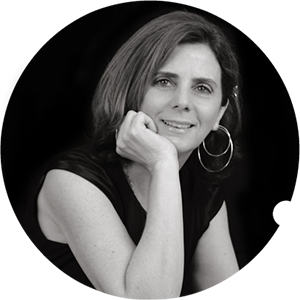They died poor and unclaimed and before their lives began. They died but before they died, they left their flesh, their eyes to science. They died lost to themselves or lost to others, loved or barely liked, in secret or on the street or without telling anyone that they were dying. They died and they were fit into pine boxes and they were hammered shut and they were ferried across the Long Island Sound and they were tossed, with inmates’ hands, from the morgue truck through the air into the trenches of Hart Island. More than a million of them now—one hundred and one acres of strangers upon strangers among strangers.
The potted bones of New York City’s potter’s field.
The families of the contingent dead whose stories have gone missing.
Like roofs on ruins, like trees uprooted by storm, like a double negative, and when there are birds, the birds sing songs.
Send up a drone, so that you might see. Cry across the sound.
•
Years ago, in an Umbrian hill town, I stood among the remembered dead. Names that had been chiseled into stones beneath my feet. Urned flowers that bloomed. Cypress trees throwing shade. The heart of Spoleto lay just beyond and the half-circle apse of the San Salvatore Basilica sat on high. Up the stairs to that apse we climbed and when we climbed back down a woman stood among the tombs and markers scrubbing dust from a stone with a handkerchief. She leaned in. She kissed the name of the departed. She wore a black sweater and black shoes and it was July. She carried a bright yellow jug of water with which to freshen flowers from the day before, and when another mourner struck a match against the marble to light a flame, the kissing woman glanced hard, kicked away loose stones, and kept her eyes open to pray.
We were writers. We were to find a tombstone and study the name, the dates, and to write anything we imagined. Anything the name and dates suggested. Said Rosellen Brown. Said Reginald Gibbons. And so I began—extending the bare details of a dead woman with fiction standing in for fact, a point of departure: Damn you, I wrote. I was not your wife and now I am not even your widow. Don’t leave me not your widow. Don’t leave me never having been your wife.
Who leaves who when someone dies?
The art of conversion is our conversation with the dead.
•
In 1991 Melinda Hunt, an artist, began collecting and assembling Hart Island photographs. The broken remains of a hospital, the remains of a prison, the remains of an internment camp, a white Madonna, and the birds and the trenches and the submerged coffins and the occasional markers, also miasma.
Take a picture. Find a picture. Find out what it means.
Hunt has been fighting for the anonymous ever since. Fighting to require the Department of Correction, which manages Hart Island, to make burial records accessible. Fighting to open this land of the dead to the living who have been banned, for years, from visiting—some restrictions only just now easing. Fighting to build a park, perhaps, or, at least, to reassign the jurisdiction of the island to a more plausibly hospitable agency.
Department of Corrections? For the dead? Where do they think the dead are going?
Once, standing in her office while a filmmaker filmed, Hunt read the words of an inmate who had planted babies in the trenches of Hart Island. A man who had slung the tiny caskets down into the bowels of the earth. The clatter. And the clatter. “… and here I am,” Hunt read, “an inmate working in a graveyard. But one thing I’ve learned from Hart Island is I don’t want to die nobody with nothing or no one to care about me. Hart Island was the best rehabilitation I’ve ever had and it’s something I’ll never forget. I guess it’s the loneliest place in the world, and I pray, and will always pray, for the lonely lost souls of Harts (sic) Island. (Derrik Sutter)”
If nobody knows where you are, are you anyone? Were you ever?
If no one can visit, what exists?
•
When my mother died she had no will, she had no burial preferences. She believed that if she spoke of dying she would die; it was bad luck to plan ahead; it was better luck to hope for life. She could not, would not die, and we didn’t want her to.
“What will we do?” my father said, and so we found her a plot in a Revolutionary era park beneath cathedral chimes that play at many hours. We found her a stone, a red-and-pink-and-grey stone, like the stone she had chosen for her own mother. We found an image she loved. We found the words she loved. We hired a stone carver.
What will we do?
After that my father built her a garden around the stone we had planted, and on a stone bench that we’d had carved and also planted, my father would sit when he was done—dirt on his knees, dirt on his hands, my mother there before him. Later, when I would come with my wreaths, with my flowers, with my gifts, I would see how my father had been there before me. I would see where he would rest some day, on the plot beside hers, on the land that is still undisturbed, except by the deer who come to eat my mother’s flowers.
•
Hunt and the Hart Island Project have launched a Traveling Cloud Museum, a museum, in other words, of traveling clouds.
Or, to be more precise, to quote from the cloud: “an innovative method for preserving the histories of people whose identities are erased by a system of burials dating back to the American Civil War.” The Museum “features an interactive map and listings of people buried since 1980. Burial information about each person includes a clock that measures the period of time that they have been buried in anonymity until someone adds a story, image, epitaph, sound or video.”
Go on. Find it. All these electronic clocks counting out the decades, years, months, days, hours, minutes, seconds since the dead person buried on Hart Island has been remembered, publicly, by a story.
Most of the clocks are still ticking, silently ticking. It’s the silence of the tick that Is so devastating.
Though sometimes, the dead’s stories are found. Sometimes, as is the case with Clara Leiser, who died and was buried in a Hart Island pine coffin, who was thrown, three coffins deep, among pure strangers. It was LaVonda Krout who told a story about Clara. Krout who posted Leiser’s obituary.
The New York Times obituary begins: “Clara Leiser, founder of Youth of All Nations, a nonprofit peace organization that grew out of her experience with refugee children in World War II, died on Saturday at her home in Manhattan. She was 93 years old. She died of congestive heart failure, said her niece, Anita Leiser, with whom she lived.”
Someone important, in other words. Someone New York Times obituary worthy. An aunt. Well educated.
Someone who is again a someone, thanks to Krout, who repossessed Leiser’s story.
Too late? On time? The clock is always ticking.
•
In a river town where I sometimes go to teach true stories I do not use tombstones, I do not use silent clocks, I do not use miasma or clouds to launch my fellow writers. I use the people of the town, the living perfect strangers, who tell their stories so that my writers can tell those stories newly. Meta memoir. Empathy project. An escape from the self-regarding I.
I write these stories, too. I walk the river banks with someone I didn’t know before and I ask and they tell and I listen, and this last time what happened is this: my perfect stranger was a young woman of vital instincts and bawdy laughter, a young woman who is dying. She told me straight off, got it out of the way, then took me toward her island, her favorite place in her river town. She took me to tell her story, and every thing she said was metaphor. Everything she said both hurt and healed me.
“I want to tell you the best and strangest thing,” she said. “Sometimes, when the river dams a certain way, when the rains fall just right, when it’s that time of year, the river water runs north. Not south the way it’s supposed to flow, but north. It defies all logic. It’s too much work. It’s too hard to fight the current, but our river does. Our river will run north between the banks where we’re standing and that island out there and then it will find its way, turn a corner, start running south again, and it’s crazy, right? Just crazy. But it happens.”
She said: “Some trees want to grow straight, but they grow crooked. Some water wants to run south but it flows north. Some kids build a bridge and the next storm washes it away, and the kids come back again, the dogs do, the birds do, we all do, I do. We fight our way back. We keep living on. The beauty in the twisted.”
It hurt like hell to hold her story. It hurts like hell to tell it. It would hurt a thousand times worse than hell if I hadn’t stopped to hear it.
We are to blame when we do not memorialize the living.
•
Who live poor and who live rich and who live until they can’t. Who live with their flesh, who live with their eyes, who lose themselves until they find themselves in someone else’s stories. Who tell or do not tell that someday, or maybe next month, they will be dying.
Watch the skies. The clouds are traveling.
Cry across the sound.



